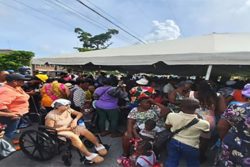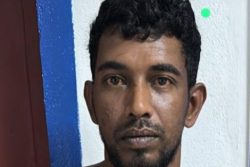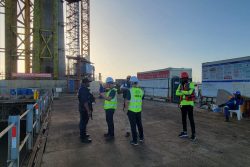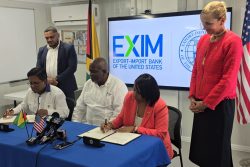Dear Editor,
I write from a place of reflection, concern, and hope as a youthful descendant of the Kapong and Pemon peoples of Upper Mazaruni (UM), as we observe the ongoing Toshaos’ elections and developing national policies which will determine Indigenous futures.
To the admiration of some, and dissent of others, the people of UM have demonstrated to the world and Guyana – the courage, strength, unity, and purpose of our peoples. Our collective approach coupled with our esteemed sense of identity as the “Padawon” people (Indigenous to UM) has been instrumental to our thrust for indigenous, environmental and land rights over several decades. To some, we’ve become a people “that always talks about land rights.” The UM Land Case remains an enduring and prominent example. This unity also secured a continuity of occupation in the face of the UM Hydro Dam in the late 1970s, which could have inundated and replaced many of our villages. As such, we ought to remain vigilant of the forces that may influence the erosion and compromise of this unified front. Disintegration can usher in easier control and chances of coercion and manipulation of our peoples. Against this background, I argue that the wholesome transformation of indigenous peoples hinges on a unified indigenous collective.
I will explain some reasons why I think this unity remains crucial for the people of UM and other indigenous peoples.
1. A village issue is an Indigenous peoples issue. The villagization and fragmentation of Indigenous peoples and lands through the Amerindian Land Titling Programme is cultivating a false sense of individuality and separateness which seemingly isolate us from the issues faced by our sister villages. Our memory of collective occupation of shared territories and resources is slowly fading as we assert these imposed boundaries sometimes against each other. As a marginalized community, we must uphold consciousness and solidarity with villages facing issues which may affect the other, whether immediate or within a decade. A village’s issue must therefore be treated as “our” issue. For example, our villages in Upper Mazaruni face similar issues of irregularities in land titling, intrusion of extractive sector contiguous or within our “titled” lands, and a regular attack to our ancestral lands. A singular village cannot address the underlying causes of these issues, but ought to be approached collectively as it affects us all now and into the future.
2. A unified people have a greater negotiating power. I believe Indigenous peoples are sleeping on their negotiating power, which is only possible unitedly. Only through unity can we leverage our collective strength to negotiate fair terms. For instance, apart from the technicalities of the programme and possible rights infringements, one can simply ask whether Indigenous peoples had the opportunity to negotiate the benefits generated through the programme. Or was it predetermined at a rate of 15%? Is this what Indigenous peoples deserve as major actors in world forest conservation? We can reflect similarly for all the resources exploited within indigenous lands.
3. A unified people foster empowered district councils and legitimate representation. Unity strengthens district councils and representation. Individual villages and councils, susceptible to external influence, may not always prioritize the collective interest. They can be politically malleable, easily persuaded, and “managed.” This undermines the legitimacy and effectiveness of
district councils, hindering our ability to advocate for our rights as a unified front. This benefits the political forces and powers and not the collective. The delayed process for the gazetting of the Upper Mazaruni District Council without any forthcoming justification therefore raises concerns for our people.
4. A unified people can plan for a collective future. Defining and shaping a shared future as Indigenous Kapong and Pemon nations may better serve the future of our peoples. Indigenous peoples are claiming their self-determined futures by formulating their own “Life Plans” or “Territorial Management Plans” according to their own customs and goals. These are plans envisioning the future of their collective territories and peoples developed over years, not merely an initiative towards an immediate end. This approach to planning is good for environmental management, cultural preservation, and sustainable development.
In conclusion, the unity of indigenous peoples is not just a moral imperative but a strategic necessity for our continued progress and well-being. It is my fervent hope that we recognize the strength in our unity and continue to stand together in the face of challenges ahead. Best wishes during the elections!
Thank you,
Romario Hastings (Kapohn)
Kako Village, Upper Mazaruni









